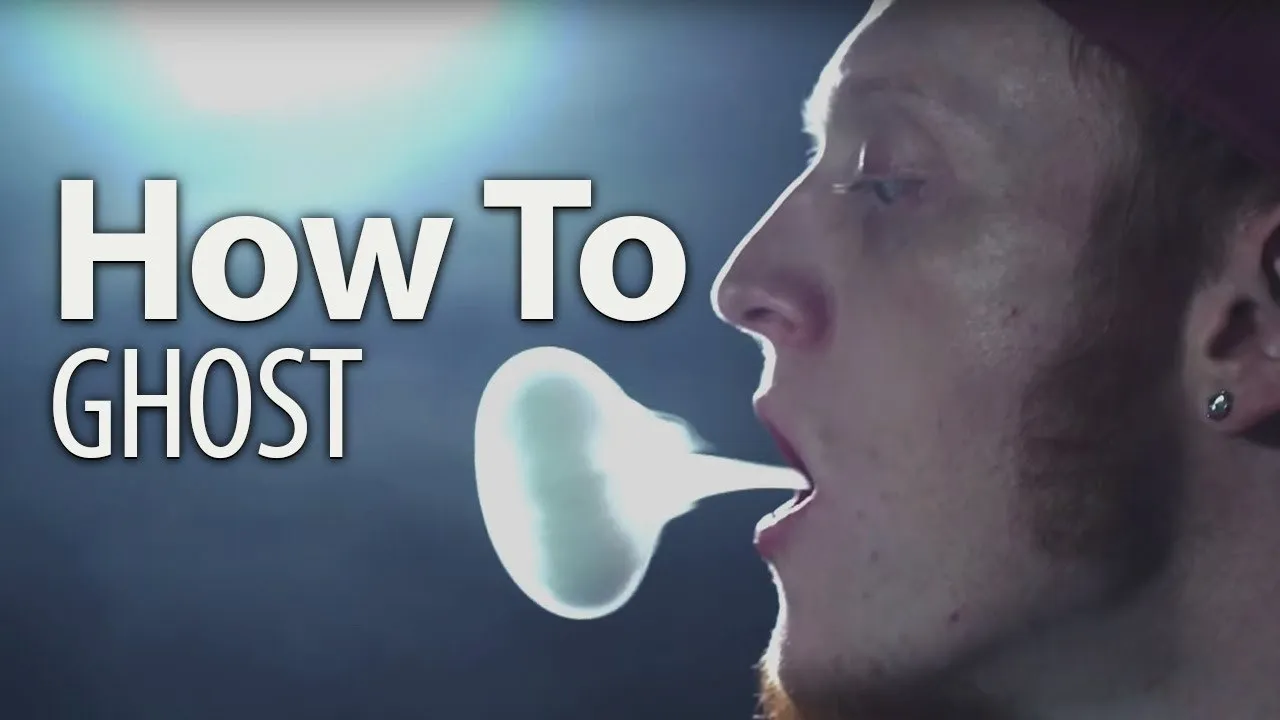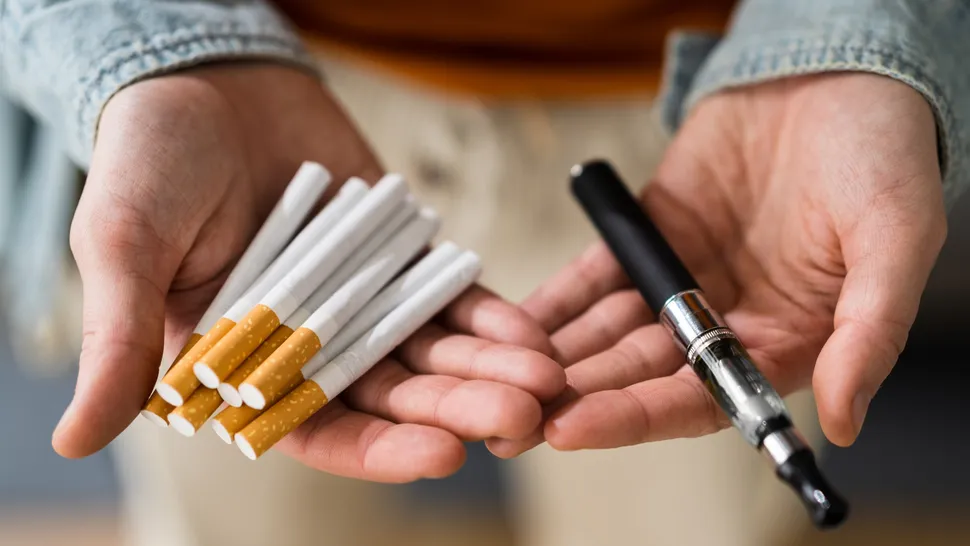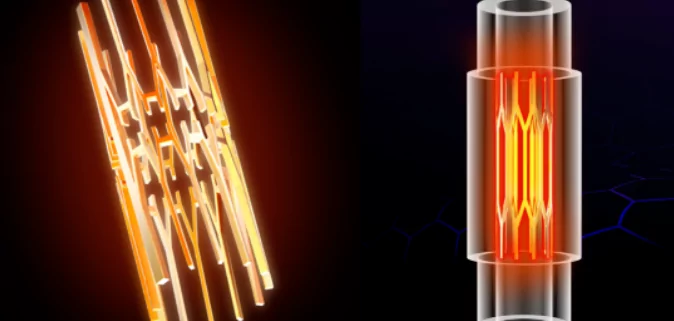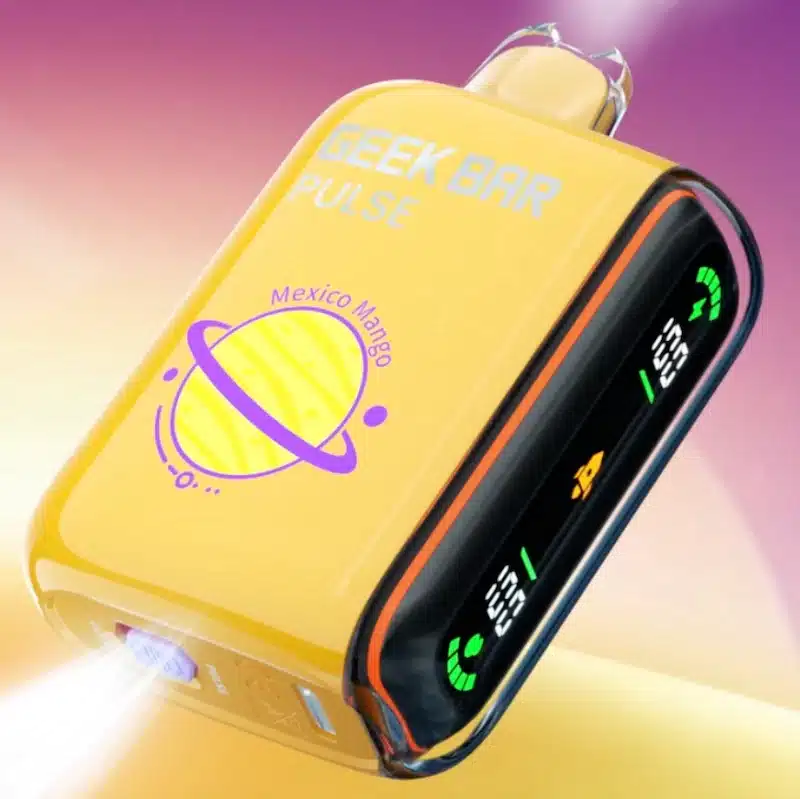On the social platform Twitter, several users from Australia shared their experiences of legally purchasing e-cigarettes from New Zealand through prescriptions. Sourcing Vape found that these users emphasized the legality of this behavior.
In fact, since May of this year, Australia has completely banned the sale of disposable e-cigarettes. The only legal way to purchase them is through a prescription from a general practitioner, and they can be bought at pharmacies or overseas websites. Other methods of purchase, such as buying from tobacco or convenience stores, are considered illegal.
Why do you need a prescription to buy e-cigarettes? This is because the Therapeutic Goods Administration (TGA) in Australia believes that e-cigarettes may help smokers quit, so they are considered “therapeutic goods” in the country. However, smokers must be diagnosed by a general practitioner to determine if they need to use e-cigarettes for “smoking cessation treatment,” hence the prescription is also referred to as “nicotine replacement therapy.”
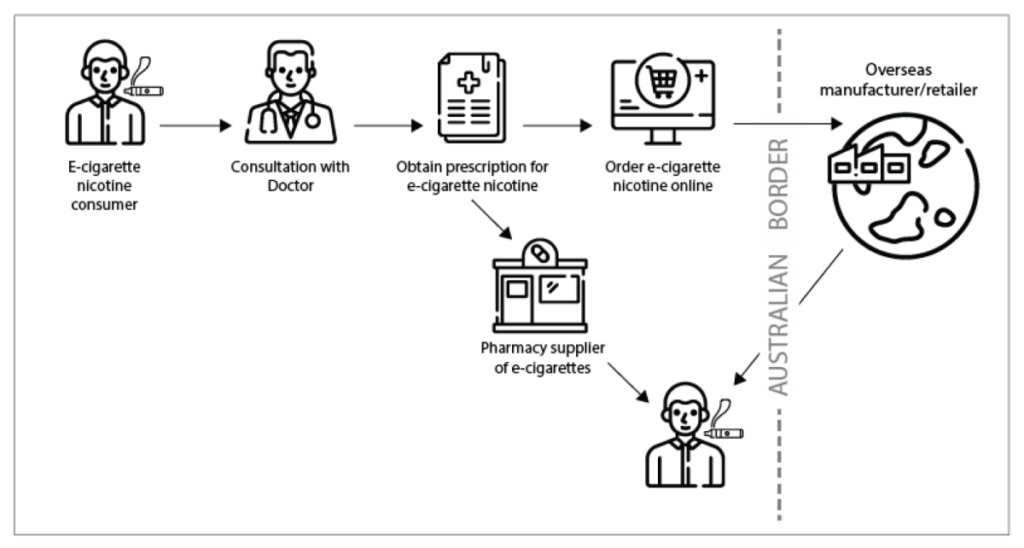
So, how effective is the “prescription e-cigarette” model that the Australian government is vigorously promoting?
The sudden escalation of the e-cigarette ban
Australia’s policy of purchasing e-cigarettes with a prescription did not start this year, but was implemented starting from October 1, 2021.
When the policy was first introduced, the Australian government stipulated that consumers must have a prescription to purchase all nicotine e-cigarette products. However, due to the large number of tobacco shops in Australia, the process of obtaining a prescription from a general practitioner was too complicated, and this policy did not achieve the expected results.
In May of this year, the Australian government further tightened its control over e-cigarettes, implementing a comprehensive ban on disposable e-cigarettes and explicitly prohibiting unauthorized e-cigarette products from entering Australia.
This means that consumers who used to be able to ignore the issue of “e-cigarette prescriptions” must now actively consult a general practitioner to obtain a prescription if they want to use e-cigarettes. At the same time, all e-cigarette shops in Australia, as well as e-cigarette businesses in tobacco shops and retail stores, had to cease operations.
Formalities-bound compliant market
Zhang Hua (pseudonym), who is engaged in the e-cigarette business in Australia, detailed the process of obtaining an e-cigarette prescription offline to Sourcing Vape:
First, the “patient” needs to consult a general practitioner to get an e-cigarette prescription. The cost of the prescription is about 70 Australian dollars (equivalent to about 330 yuan). The choice of treatment includes 3 months, 9 months, and 12 months, and the specific treatment plan needs to be judged by the doctor based on individual circumstances. After obtaining the prescription, the “patient” also needs to contact the pharmacy to pre-order the e-cigarette, as most pharmacies do not regularly stock e-cigarette products.
In addition, Sourcing Vape learned that e-cigarette prescriptions can also be obtained online, but at a relatively higher cost.
On a website claiming to be the “leading smoking cessation and nicotine e-cigarette harm reduction clinic in Australia,” Sourcing Vape found that the website provides application services for e-cigarette prescriptions online. Applicants need to provide basic personal information and smoking history, and pay a fee of 85 Australian dollars (equivalent to about 400 yuan) to obtain a prescription valid for 12 months.
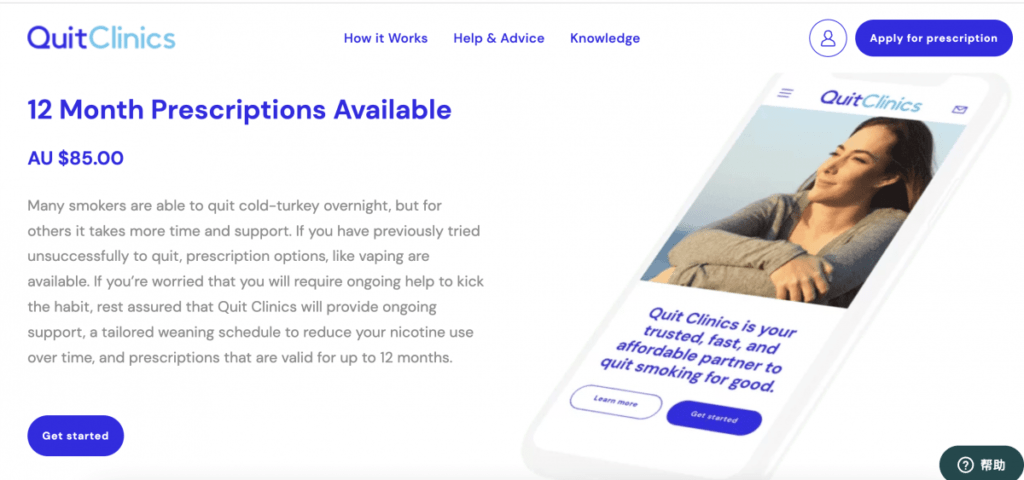
So what kind of products can enter the pharmacy system? Zhang Hua said that this requires distributors or importers to submit declarations to the local government of Australia. After the declaration is approved, they also need to find pharmacies willing to sell these products.
However, finding pharmacies willing to accept e-cigarette products is not an easy task. On July 5th, Sourcing Vape reported that in order to convince Australian pharmacies to sell the e-cigarette product VEEV, the international tobacco giant Philip Morris International (PMI) voluntarily gave up 80% of the sales profit.
Furthermore, Zhang Hua further explained that the e-cigarettes sold in pharmacies are 2ml pod-based products, with limited flavors, mainly mint and some basic flavors. There are usually two brands, one of which is the well-known Chinese brand RELX.
However, in Zhang Hua’s opinion, Australia’s legal e-cigarette business has almost no market, and prescriptions seem to be a formality of policy requirements.
Unexpected profits in New Zealand
In addition to going to a pharmacy, there is another way to legally purchase e-cigarettes in Australia, called the “personal import plan.”
According to Sourcing Vape, this method also requires a prescription. After obtaining the prescription, consumers can purchase e-cigarettes and e-liquids from official e-cigarette websites overseas, and the seller will then mail the products to the consumer. This method allows consumers to choose brands and flavors without too many restrictions.
However, according to TGA regulations, this method requires individuals to import no more than three months’ worth of e-cigarettes each time (based on the manufacturer’s recommended maximum daily usage), and within any 12 months, not more than 15 months’ worth.
Sourcing Vape learned that consumers who purchase e-cigarettes this way mostly buy e-cigarettes and e-liquids from online e-cigarette stores in New Zealand.
According to industry insiders familiar with the New Zealand market, there are many brands in the New Zealand e-cigarette market, but there is no absolute leading brand. One of the better-selling e-cigarette brands is Airspops, a subsidiary of the well-known British e-cigarette company AIRSCREAM.
Fierce black market
However, whether it is the “e-cigarette pharmacy” or the “personal import plan,” their market share is quite limited. The main sales of e-cigarettes in Australia still heavily rely on the illegal market, with the black market accounting for over 95% of the market share.
After the comprehensive ban policy was introduced in May this year, an Australian e-cigarette distributor expressed his views on this policy on TikTok. He openly stated that he would not close his business due to the government’s new regulatory measures and would choose to continue operating in the “black market.”
As of now, the e-cigarette ban policy in Australia has been in effect for five months, and it seems that many distributors hold similar views to the above-mentioned distributor in the Sydney area. Zhang Hua stated that in the Sydney area alone, there are about 2,000 e-cigarette shops and tobacco shops that sell e-cigarettes.
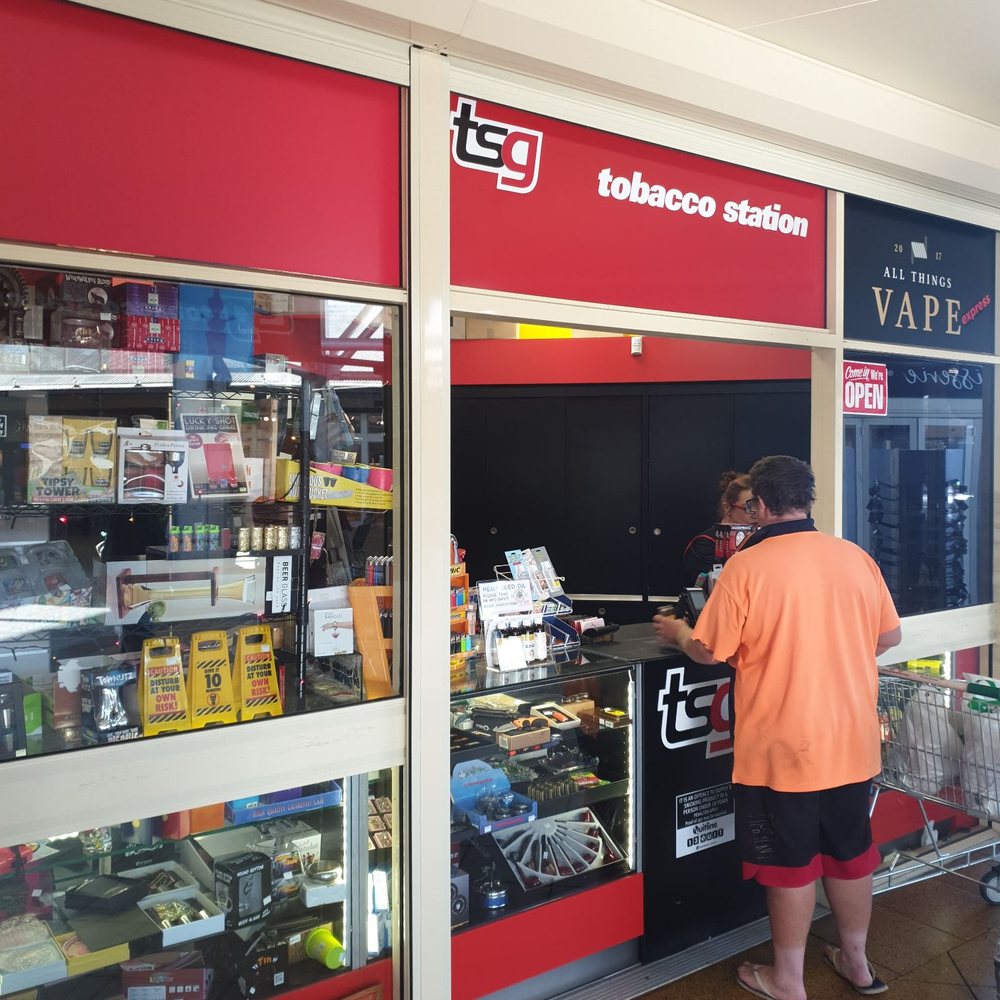
Zhang Hua added that due to the relatively weak enforcement in Australia, although enforcement officers from regulatory agencies occasionally inspect tobacco shops, overall, the penalties are not strict. Typically, the first violation will result in a warning, the second may lead to the seizure of goods, the third may result in a fine, and from the fourth violation onwards, the tobacco shop may have its operating qualifications revoked. However, even if ordered to stop, shop owners often find ways to continue operating by changing names or obtaining new licenses.
It is understood that in the Australian black market, mainstream e-cigarette brands mainly include IGET, HQD, GUNNPOD, and WAKA. According to Zhang Hua, IGET has the largest market share, estimated to be between 60% to 70%, while the other three brands account for 20% to 30% of the share.
However, due to Australia’s strengthened regulation of e-cigarette imports, unauthorized e-cigarette products face a high risk of being confiscated when entering the market. An industry insider specializing in e-cigarette logistics revealed to Sourcing Vape that Australia’s e-cigarette import policy is extremely strict, and it is difficult to complete the compliance procedures. “Gray channel” products also come with a significant risk of being confiscated, so the number of logistics companies able to transport e-cigarettes to Australia is very limited.
Will the ban be lifted in the future?
According to data released by the Australian Department of Health, there are more than 3.5 million residents aged 14 and above in the country who use cigarettes or e-cigarettes, accounting for about 13.5% of the total population. This proportion is comparable to the smoking rate in the leading European e-cigarette market, the UK, which is 13.3%.
In addition, according to the September export data published by the General Administration of Customs of China, China exported e-cigarette products worth 17.39 million US dollars to Australia. This also indicates a considerable demand for e-cigarettes in the Australian market.
Many experts and scholars in tobacco harm reduction are worried that Australia’s strict e-cigarette control policy may lead to a more prosperous black market, which deviates from the original intention of the country’s ban on e-cigarette products.
At the Global Tobacco and Nicotine Forum (GTNF) in 2023, Patten, who had served in the Victorian Parliament of Australia, expressed his views on this policy. He bluntly stated that the Australian government has not truly implemented tobacco harm reduction (THR) measures. Caroline Bowman, the founder of MedicalNicotine, a company providing general practitioner and prescription services in Australia, also stated that the implementation of the prescription e-cigarette system in Australia has not completely eliminated the use of non-prescription e-cigarettes, and this approach still needs further discussion.
Dr. Colin Mendelsohn, an Australian smoking cessation expert, candidly stated in an interview: the prescription e-cigarette model in Australia is a failed model.

Currently, many experts in tobacco harm reduction and international tobacco companies are actively advocating and lobbying, hoping that the Australian government will lift the ban on disposable e-cigarettes and formulate new regulatory policies. Whether the Australian government will heed the call and open up the e-cigarette market is still uncertain.









